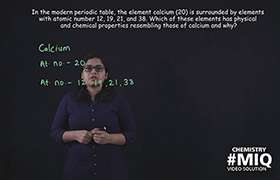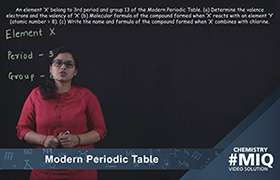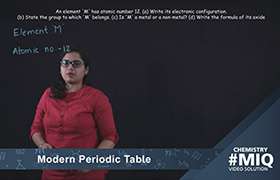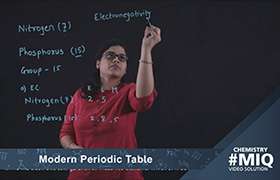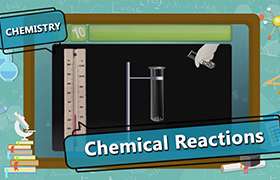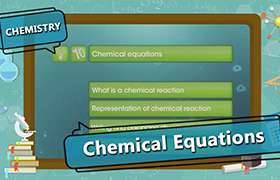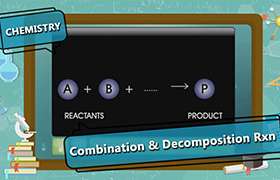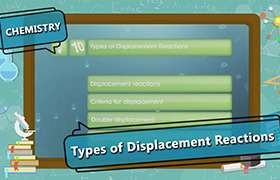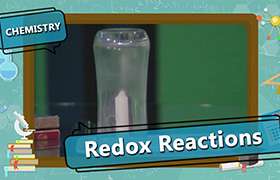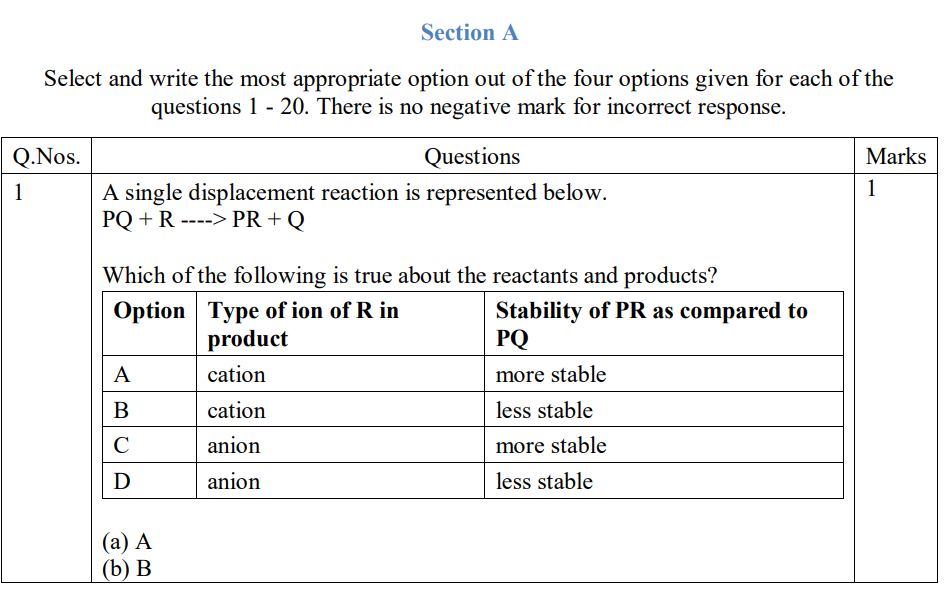CBSE Class 10 Answered
Please answer these all questions...my science' paper is tomorrow.
i)Define Brisk Effervescence.
ii)What are trends?.Explain briefly trends in Modern Periodic Table.
Asked by vijayjethi17 | 21 Mar, 2017, 05:47: PM
Brisk effervescence is defined as the rapid or vigorous evolution of a gas in a chemical reaction. For example, when hydrochloric acid is added to sodium bicarbonate, bubbles of carbon dioxide gas are formed vigorously.
The properties which show gradual variation in a group and in a period, and repeat themselves after a certain interval of atomic number are called periodic properties.
Valency
- The valency of an element is determined by the number of valence electrons present in the outermost shell.
- In a group, all the elements have the same number of valence electrons.
- On moving from left to right in each short period, the valency increases from 1 to 4 and then decreases to zero.
Atomic size
- Atomic size refers to the radius of the atom.
- It is the distance between the centre of the nucleus and the outermost shell of an isolated atom.
- In a period, the atomic radius decreases from left to right. This is because the electrons are added to the same shell and so they experience a greater pull from the nucleus.
- Moving in a group from top to bottom, the atomic radius increases as new shells are added, bringing the outermost electrons farther from the nucleus.
Metallic & Non-metallic Properties
- Metals show a tendency to lose electrons and are said to be electropositive.
- Non-metals show a tendency to accept or share electrons and are said to be electronegative.
- Moving from left to right in a period, the metallic character decreases and the non-metallic character increases. The atomic size decreases and so the electrons are not released easily.
- In a group, the metallic character increases from top to bottom and the non-metallic character decreases. This is because, the atomic size increases and so the valence electrons can be easily removed.
- Elements on the left of periodic table are all metals and on the right of periodic table are all non-metals.
- A zigzag line in the periodic table separates the metals from non-metals. The borderline elements show intermediate properties and are called metalloids.
Answered by | 21 Mar, 2017, 06:01: PM
Application Videos
Concept Videos
CBSE 10 - Chemistry
Asked by kamalapallysudha17 | 25 Mar, 2024, 07:52: PM
CBSE 10 - Chemistry
Asked by sagarmishra | 04 Mar, 2024, 09:50: AM
CBSE 10 - Chemistry
Asked by 09.10bjanvhijadhav | 02 Mar, 2024, 08:22: AM
CBSE 10 - Chemistry
Asked by prassanna.j | 01 Mar, 2024, 11:59: AM
CBSE 10 - Chemistry
Asked by ritik9897022 | 05 Feb, 2024, 09:42: PM
CBSE 10 - Chemistry
Asked by parthmarch1 | 14 Dec, 2023, 08:27: PM
CBSE 10 - Chemistry
Asked by amanazeez6 | 14 Dec, 2023, 01:10: PM
CBSE 10 - Chemistry
Asked by reetritu34 | 14 Dec, 2023, 07:54: AM
CBSE 10 - Chemistry
Asked by yadavparmit83 | 01 Dec, 2023, 06:16: AM
CBSE 10 - Chemistry
Asked by susrisangita792 | 17 Nov, 2023, 08:27: PM

